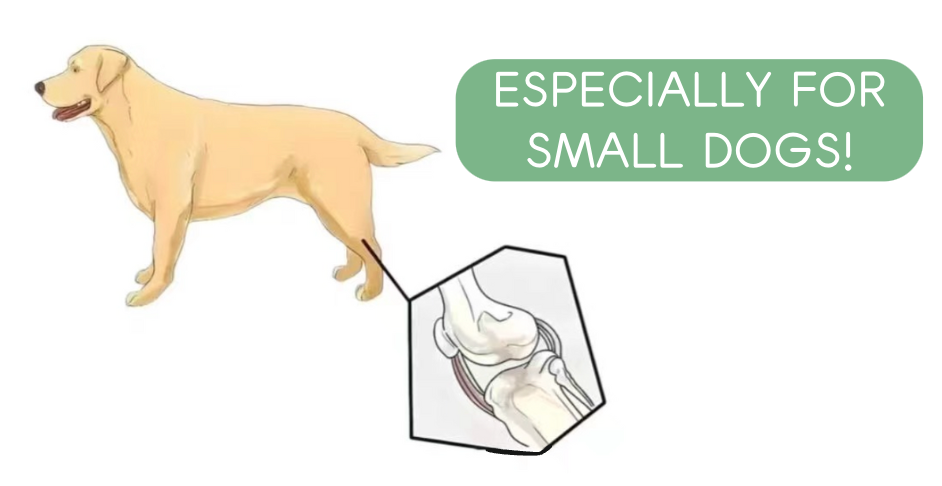What is Patellar Luxation?

The dog's kneecap has moved out of its proper position and cannot connect properly with the thigh and shin, so the most noticeable symptom is that the dog walks abnormally.
Limping, or bunny hopping, frequent licking of the joint, difficulty standing up or sitting down and other symptoms.
Grading of Patellar Luxation:

Grade I: No obvious symptoms, hard to detect.
Grade II: May show mild to moderate lameness, especially after activity. Some dogs may occasionally display discomfort while walking.
Grade III: Frequent leg lifting while walking, with unsteady gait.
Grade IV: Sitting while walking, completely immobile, unable to walk, with severe pain!
Breeds prone to congenital patellar dysplasia include Poodles, Bichons, Pomeranians, etc.
Acquired factors such as trauma, jumping, and vigorous exercise can also lead to patellar dislocation.
Causes of Patellar Luxation in Dogs:
- Genetic Factors: Many cases are due to congenital developmental issues, with a higher risk in dogs with hereditary predispositions.
- Owner Influence: Improper training (like letting the dog walk upright) can contribute to patellar luxation.
- Daily Activities: Jumping, running, or excessive exercise, especially overweight ones, are at higher risk of patellar dislocation.
- Recurrence of Old Injuries: Dogs with weaker constitutions or existing joint issues are more likely to experience patellar luxation again.
Solutions and Prevention:
Conservative Methods:
(For dogs with grade 1-2 )
This approach is less costly and avoids surgical risks and side effects.
It includes physical methods like swimming, massage, and water therapy to help the dog recover gradually.
Other methods involve supplements like glucosamine to support recovery.
Surgical Methods:
(For dogs with grade 3-4 )
The condition is severe enough to affect normal walking and cause significant pain, impacting the dog's overall well-being. If this occurs, surgery is advised.

